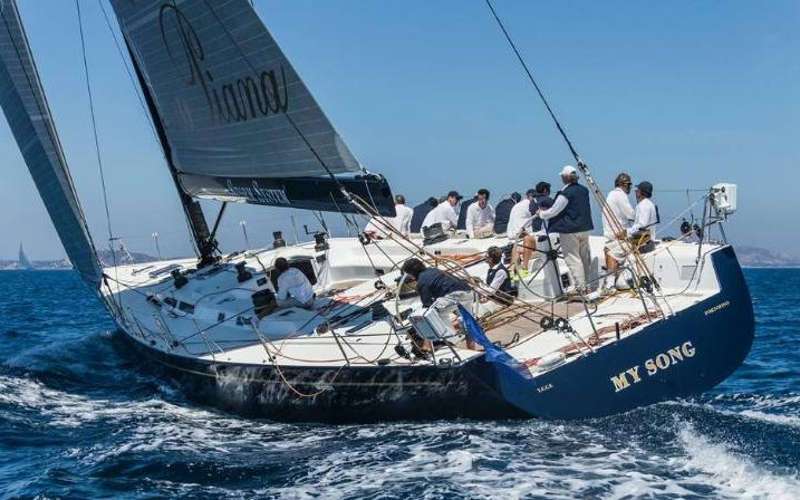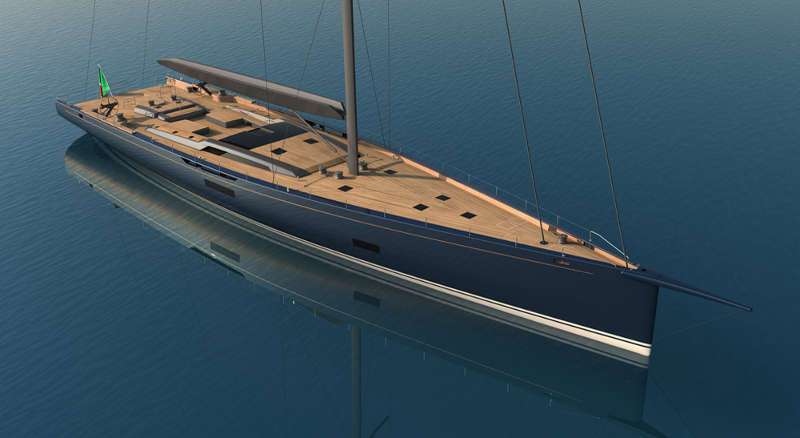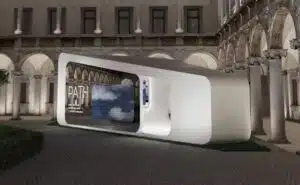[vc_row][vc_column][vc_column_text]Nel mercato planetario dello yachting di alta gamma l’Italia è conosciuta per tre cose: i motoryacht veloci e stilosi; il cantiere di barche a vela Swan e lo studio Nauta Design.
From the first minitonner designed when they were just 20-year-old regatta enthusiasts, to the 100-footers built by the South African shipyard Southern Wind. From the interiors of boats from the French shipyard Beneteau (world leader in series production), to theinterior design of the Azzam megayacht (180 metres). In the history of Studio Nauta there are many successes and turning points, with a lowest common denominator throughout thirty years: the search for a calm, functional and pleasant style, never exaggerated.
Here are the 7 most important things to know about the Milanese studio Nauta Design.
Passion overcomes reason. Mario Pedol, a business economics student at Bocconi in the late 1970s, with 16 exams already taken, was contacted by a friend, a regatist like himself, who suggested that he design and build a minitonner. They already had a first customer, a certain Pigi Loro Piana (who was to become the Italian cashmere magnate).
Quality training makes all the difference. After the good response to this first boat called the Avventura 703 (of which seven were sold), Mario Pedol decided it was time to put this passion on a more solid footing, and enrolled at the Higher Institute of Architecture, where he learned the secrets of yacht design from the best designers of the time: Fulvio De Simoni, Epaminonda Ceccarelli, Massimo Gregori, Sergio Abrami and Andrea Vallicelli. But he would earn his design degree in the field, a few years later, by designing Renzo Piano's yacht, the famous Kirribilliwhich was to become a milestone in yacht design.
The first big success. In 1986 Nauta Design exhibited an innovative 54-footer at the Genoa Boat Show, with two cockpits and four cabins, never before seen on a 15-metre boat. The standard layout at the time was still one master cabin aft and two small cabins forward. The hull was not only beautiful to look at but also fast. With clean and rational deck manoeuvres and a functional and bright interior. A boat that seduced at first sight, so much so that two examples were sold immediately in Genoa, to which the third was added within a few months.
The manifest boat. In 1999 their first customer, Pigi Loro Piana, commissioned their first maxiyacht, an 84-foot (25-metre). The owner's demands were simple: a boat to experience the sea but one that was fast and fun to sail. Mario Pedol and his colleagues hit the target and built My Song, which was nicknamed "Dr Cruiser & Mr Racer" and would be the first in a long series of beautiful, elegant and fast boats.
The challenge of mass production. In 2001 Madame Annette Roux owner of the shipyard Beneteau (the world's largest manufacturer of sailing and motor boats) wants to meet them and gives them a no-nonsense talk, as is the Breton style. He knows he has a sales network and an industrial organisation of the highest level, but he also knows that innovation is no longer their forte, so they are looking for the world's top yacht designers. Do they think they are? Nauta Design takes up the challenge and designs the interiors of what will later become the Oceanis 45 and 50with innovative ideas that will later be applied to the entire production. Nauta Design's expertise extends to technical, industrial and economic aspects.
Here comes the wind from the south. Another prestigious collaboration that leads Nauta Design to explore new heights is the one with the South African shipyard Southern Wind, owned by an Italian, Willy Persico. It starts with a 92-footer that the yard honestly admits it cannot deliver in the timeframe requested by the owner, and ends (for now) with boat number 15 of the multi-hundred-footer. World Record in the series production of boats of this size.
The Nauta factor. The firm is unanimously recognised for its ability to create boats, both sail and motor, with something extra, which is never the sterile pursuit of excess but is striking a balance. An achievement that also stems from a working method that involves the shipowner from the very first moment, which is nourished by collaboration with the best naval architects (such as Reichel/Pugh with whom they realise almost all Southern Winds) and which is developed by adopting the best techniques and materials available.
If you, like us, can't get enough of talking about boats and the sea, we recommend you ask for more information on our Masters in Interior Yacht Design. Because sometimes passion also becomes a profession.
Sources: Top-yachtdesign.com[/vc_column_text][/vc_column][/vc_row][vc_row][vc_column][mk_button dimension=”outline” corner_style=”full_rounded” size=”medium” icon=”mk-icon-home” url=”/” align=”center” margin_top=”30″ margin_bottom=”0″ margin_right=”0″]Torna alla Home[/mk_button][/vc_column][/vc_row]






